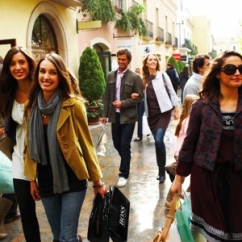Articles and News
Bain: Global Personal Luxury Goods Market On Track For Recovery This Year May 18, 2021 (0 comments)

Milan, Italy—The luxury market has started its path towards recovery, says the latest findings from Bain & Company, leading advisor to the global luxury goods industry.
The industry returned to growth in the first quarter of 2021, growing by 0-1% (2—3% at constant exchange rates) versus 2019, which is viewed by the industry as the last comparable year. China continues to drive the recovery while the United States unexpectedly rebounded and become an unexpected bright spot. Renewed consumer confidence coupled with stimulus and a rapid vaccine rollout has meant that luxury consumption returned at surprisingly fast pace. Europe still lags behind, hampered by a slower vaccination campaign and the lack of international tourism.
These are the key findings from the “Bain & Company Luxury Study 2021 Spring Update” released Monday in collaboration with Fondazione Altagamma, the Italian luxury goods manufacturers’ industry foundation.
The acceleration of the key U.S. region is one of several new trends of note, along with the importance of a human touch alongside digital interactions and the increasing presence of brands in the secondhand market.
“It’s clear that consumers still want to buy luxury goods, and this, along with the brands’ ability to adapt and innovate, is driving a return to growth in the market,” said Claudia D’Arpizio, a Bain & Company partner and lead author of the study.
But the outlook for 2021 is far from guaranteed. The market is expected to reach between €250-€295 billion, depending on which one of two scenarios outlined in the report plays out over the course of the year. Despite signs of green shoots in the market, a high degree of uncertainty remains. There are two possible trajectories for the recovery in 2021:
Scenario 1 (probability 30%): Recovery path to continue throughout 2021, winning back 2019 market level as early as this year. In this outcome, the market could reach €280-295 billion this year.
Scenario 2 (probability 70%): Despite the strong momentum of the first quarter, full year growth is stifled by slower domestic luxury purchases and limited intra-regional tourism. In this case, the full recovery to 2019 levels would be expected only in 2022 and the market would reach €250-265 billion this year.
Three trends to watch. As the luxury industry navigated through the crisis, some trends have solidified. Growth of the online channel remains robust as new clients buy luxury online for the first time, and the range of prices is widening, with more entry-level products but also more high-end items. Among the trends to watch in the coming months:
Roaring 20s could reshape the U.S. luxury market: The rebound in the United States has exceeded expectations. Improved macroeconomic conditions, a buoyant stock market, increasing consumer confidence, and a fast vaccine rollout are contributing factors to a strong recovery. Bain has seen a change in the market map with new city hubs and a growing emphasis on suburban areas, as well as the rise of subcultural relevance and next-generation mindset.
Human touch still matters: The pandemic catapulted luxury brands into the age of digital at an unforeseen pace. Bain estimates that more than 85% of luxury purchases were digitally influenced in 2021. But the human touch in luxury remains needed and whether in-store or remotely, these interactions will play a critical part in maintaining customer loyalty.
The secondhand market touches multiple consumer segments: Bain estimates the secondhand market for luxury to be worth €28 billion euros in 2020 (up from €26 billion in 2019). The market for pre-worn luxury items encompasses not only entry level younger consumers who are mainly buying aspirational categories and products but also top spenders and collectors who are searching for high-end or collectable products. Brands are increasingly tapping into this market and becoming platforms to engage with them throughout the lifecycle of an item.
“Brands have been forced to rip up the playbook and innovate rapidly in light of the crisis,” said Bain & Company partner and report co-author Federica Levato. “As life hopefully begins to return to normal, customers are expecting a tech-enabled human relationship with brands. Winners will need to stay closely in touch with the key trends shaping the new normal lifestyle – all while remaining differentiated and creating a narrative that is true to their own culture.”







